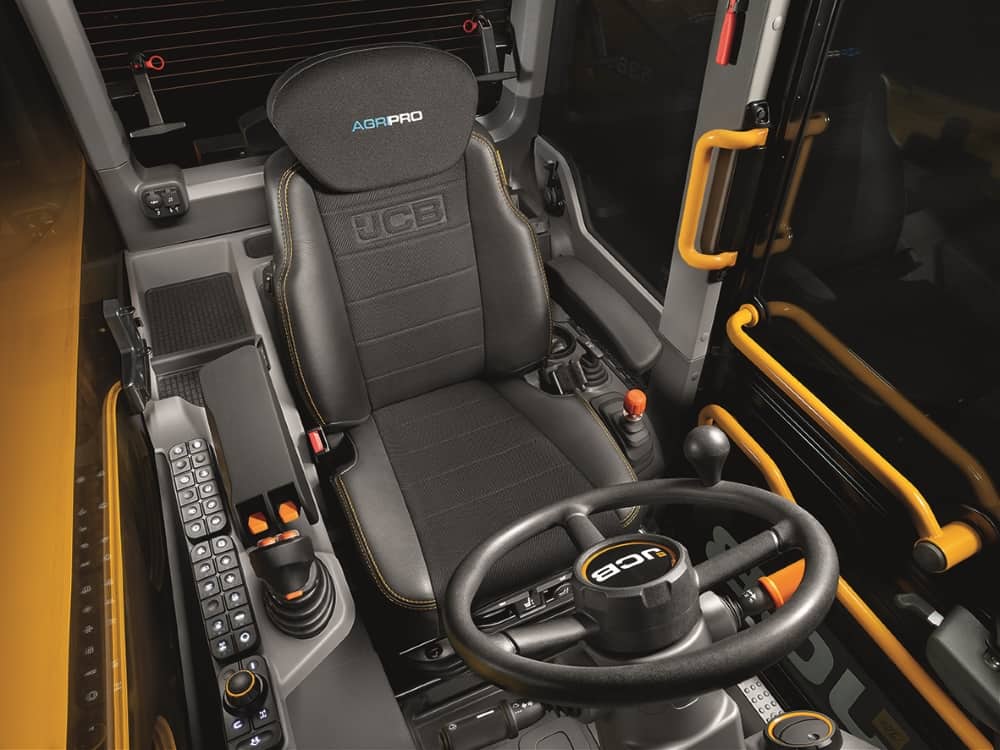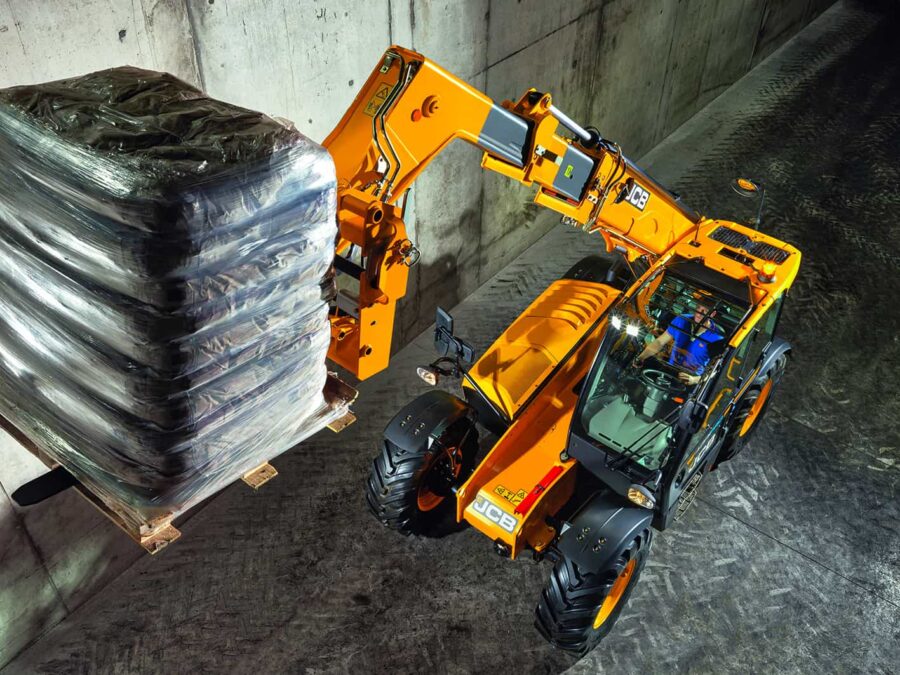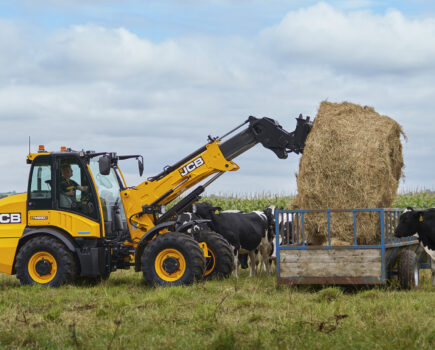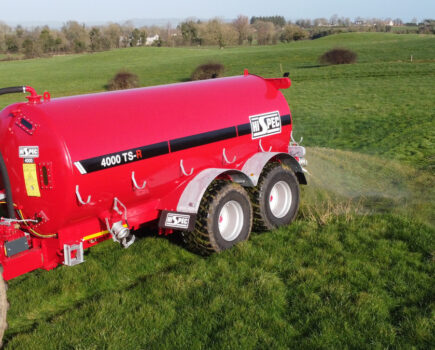A new range of JCB Loadall agricultural telescopic handlers has been launched featuring increased lift performance, improved safety and driver comfort, and an all-new cab.
The Command Plus cab is a remarkable 50% quieter, the view to the front wheels has been transformed by the low-set dash panel and visibility upwards to a raised bucket or fork is 14% better thanks to uninterrupted glazing that sweeps up and over the operator’s head. It is also more spacious, has a neater control layout and provides considerably more dedicated storage – including a large lift-out bin located behind the seat for documents, light hand tools and the operator’s lunch bag.
JCB’s chief innovation and growth officer Tim Burnhope said: “The latest phase of the Loadall’s development is focused firmly on the agricultural operator, with the all-new Command Plus cab. It’s quieter, wider and longer, with an improved driving position, controls that are easier to locate and use, and an instrument display that is larger and more informative.
“The Command Plus design also brings a transformation in forwards and upwards visibility that we believe sets new standards for operator productivity, safety and driving ease – it’s a cab without compromise.”
The new JCB Loadall Series III range comprises four models with up to 200kg increased load capacity over their predecessors – the 6 metre lift 538-60, 7 metre 532-70 and 542-70, and the 9.5 metre high-lift 536-95. The heavy-lift, bulk handling 560-80 with 8 metre lift height and 6 tonne lift capacity remain the same.
Power units are unchanged – the 4.4-litre and 4.8-litre JCB EcoMAX engines serve up a choice of 75hp, 109hp, 125hp and 145hp outputs.
But there is a new 40kph TorqueLock 4 powershift transmission with four-speed torque converter lock-up for the 109hp engine to provide more performance and better fuel economy than the regular 30kph four-speed transmission when travelling and towing.
Continuing unchanged are the six-speed JCB Torque Lock auto powershift and unique JCB DualTech VT hydrostatic/powershift transmissions, which are both capable of 40kph.
The new cab design embraces the JCB Driver’s Command Position philosophy, which has been defined after extensive ergonomic studies to provide operators with a comfortable driving position that helps them work efficiently and with less fatigue over a long working day.
Tim Burnhope explained: “When operators climb aboard a new-generation Loadall they will find the same adjustable Dynamic Tilt Away steering column, the same ventilation layout and the same function-grouped switches as on the JCB Fastrac tractors and wheeled loaders. That familiarity makes it easier for operators to find their way around the multitude of controls needed on modern machinery.”
The Loadall telescopic handler is renowned for its all-round visibility so JCB engineers focused on the operator’s view forwards and upwards to optimise productivity, safety and ease of operation. A single-radius sheet of curved glass would have been the simplest solution but was rejected for a more sophisticated multi-radius design that maintains a sense of spaciousness behind the wheel without distorting the view out.
Itprovides a continuous field of vision from the low-set bottom edge of the glass to the top edge above the operator’s head, while angling the crossbars of the internal FOPS safety grille contributes to a 14% increase in upwards visibility. Four wipers and washer nozzles keep 92% of the glass clear of rain, dust and dirt, with a fifth wash/wipe cleaning the rear window.
While the latest Loadalls use a familiar electro-hydraulic joystick to operate the boom and attachments, the previous array of rocker switches has given way to clusters of durable rubber membrane switches, mostly located alongside the joystick.
A rotary selector navigates menus and selects functions on the new tablet-like instrument display that ‘floats’ in front of the right-hand cab pillar, and on AGRI Pro versions with the DualTech VT hydrostatic/powershift transmission, the individual electric engine speed and ground speed controllers used for Flexi Mode are now paddle switches in the end of the armrest.
A 10% increase in airflow volume and an ‘auto defrost’ switch has made a considerable difference to in-cab ventilation, which can clear all windows of condensation or frost 66% faster than before. The new cab also features a ‘stable’ door – a priority according to operators who like plenty of fresh air while working – with high-specification rubber seals contributing to a 50% reduction in noise level.
A dedicated mobile phone holder above the new 7-inch tablet-like instrument display positions the device where it can be used for satellite navigation guidance, and for hands-free calls using the Bluetooth connection, a microphone integrated in the right hand cab pillar cladding and two speakers behind the operator.






